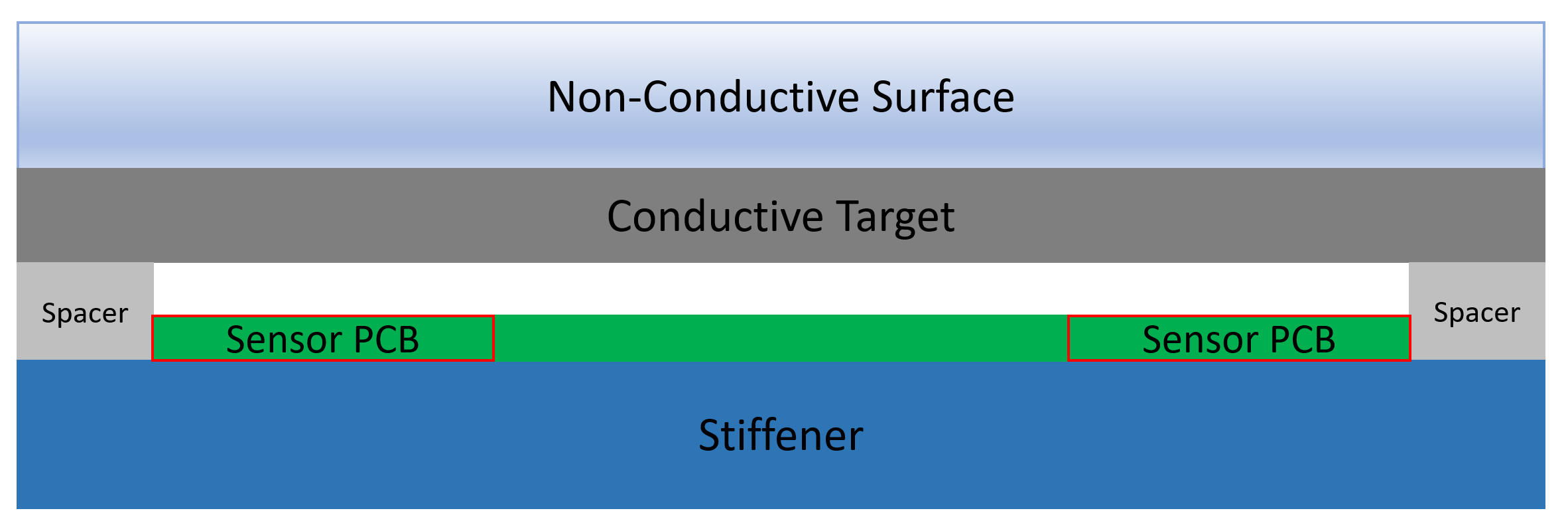SNOAA76 August 2021 LDC3114 , LDC3114-Q1
1.3 Human-Machine Interface Design Guide
Section 1.2 lists several examples of commonly-used applications that are appropriate for inductive metal proximity sensing. For stove displays or ATM interfaces where users may wear gloves when operating, inductive sensing allows for system functionality regardless of debris from normal operation. This is ideal for systems that are outside or in busy kitchens.
Figure 1-1 shows a common method to implement a layer stack for a touch button in a human-machine interface (HMI). The non-conductive layer can be a large, uninterrupted surface. By placing sensor PCBs at different points along the outside of this area, the deflection of the surface layer can be transmitted to the sensor.
 Figure 1-1 Example Layer Stack
Figure 1-1 Example Layer StackIn applications where the button press is experiencing a timeout or the baseline tracking has been reset, metal proximity sensing can be used to verify the target location. A micro-deflection is translated to the target when a user presses on the top non-conductive surface. This example mechanical stack up can be translated to work with many other types of material surfaces for different HMI designs. For detailed information regarding button construction and target material, as well as LDC3114 internal algorithms, see the Inductive Touch System Design Guide for HMI Button Applications and LDC211x and LDC3114 Internal Algorithm Functionality application reports.